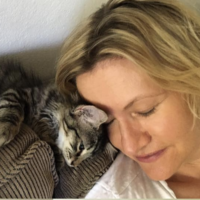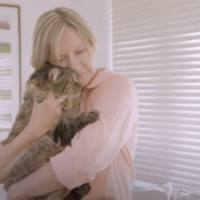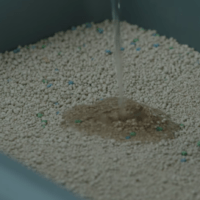Cat Trap-Neuter Return: Australia, is it time?
Australia has a love-hate relationship with the cat. Cat owners love them and people who have never owned a cat fail to understand the attraction! Stray cats are an issue and recent research has looked at trap-neuter-return programs for urban stray cats…
Quick Summary of Trap-Neuter-Release Findings and Recommendations for Australian Stray Cat Populations
- Stray cats are an issue, with colonies found in all Australian cities.
- Volunteers wish to care for these cats and improve their health and life.
- Trap-Neuter-Return programs are effective at controlling stray cat populations in other countries around the world but are generally considered illegal in Australia.
- TNR activities in Australia have been successful but are not widely supported due to their illegal nature.
- Changing legislation and implementing best practice TNR programs may successfully reduce the stray cat populations

The stray cat issue
Stray cats are a problem; a problem around the world and also a significant issue in Australia. At an estimate, Australia has around 1-2 Million urban stray cats. Stray cats end up in pounds and shelters, where many are euthanised. While some may be rehomed, many cats have never been socialised to humans and cannot make the transition to pets.
Many stray cats, however, are actually semi-owned, where some level of care is provided by humans, often the supply of food. One survey found that one in five households were caring for a cat that was not theirs. Since these semi-owned cats, and they may account for 80-90% of cats entering shelters and pounds, have had exposure to humans, they cannot be considered feral, as many people mistakenly term them.
Euthanasia of stray cats, as a means of controlling populations, may appear logical to many people. But this low-level killing may actually increase populations of strays, due to juvenile cat survival and multiplication. To reduce the strength of cat colonies, it would require an estimated 30% to 50% of the population to be trapped and culled every six months for at least a decade! Not only does this involve a significant amount of labour and patience, but also has an impact on the stress levels and mental health of the workers concerned.
Transitioning your cat from being an outdoor to indoor cat
Trap-Neuter-Return
Desexing is an important aspect of cat care and controlling feline populations. Trap-neuter-return (TNR) is the process where stray cats are caught, desexed (neutered) and returned to their original location. TNR is used in many overseas countries, including Singapore, Canada, Italy and the United States and results in markedly decreased shelter cat intake. At least 75% to 80% of all cats must be desexed to cause population decline and eventual colony extinction. This may take 12-13 years.
In Australia, TNR, until now, has not been considered a suitable option for the control of stray cat populations. Australians worry about the predatory behaviour of cats on native wildlife, in addition to concerns about their nuisance behaviour. Australian legislation prohibits the abandonment of cats, which, arguably, the TNR process results in. Unofficial TNR programs, however, are being conducted by individuals and organisations all around Australia, with many volunteers providing flea and intestinal parasite treatment in addition to herpes, calicivirus and panleukopenia virus vaccinations for kittens – practices that hardly be considered abandonment.

Australian TNR Study
A recent study has looked at TNR activities within Australia. Survey respondents, 90% of which were female (generally between 36 to 65 years old), provided information about their TNR activities. Cat colonies were located in all major cities and were commonly found around private residences, industrial areas, alleyways or streets. Volunteers became involved due to their desire to stop cats breeding; to make life better for stray cats; because the cats were at risk of being trapped and killed by authorities and/or to reduce nuisance behaviours. Feeding alone took up an average of 4-6 hours per week for these volunteers and many organised desexing and medical care of the cats in their colonies. Adoptable cats were rehomed where possible and the rest returned to their colonies.
The median initial colony size, for 44 colonies, was 11.5 cats. As a result of TNR activities, colony sizes decreased a median of 31% over two years from 11.5 to 6.5 cats. This was mainly due to desexing and adoption, the latter accounting for 80% of the original colony size. While the intention was to desex 80-100% of cats in these colonies, on average only 50% achieved this within the first six months. Immigrant cats, when not desexed, sustain colony populations and these, together with births of kittens, keep colonies going.
While relatively successful in reducing the number of stray cats, TNR must be done reliably and records must be kept. Since TNR is considered an illegal activity over much of Australia, many individuals and organisations involved in this procedure go under the radar and cannot get funding, making it difficult to sustain over the number of years that are required to reduce stray cat colonies.

The future of TNR in Australia
TNR is a useful method of non-lethal control of urban stray cat populations. It results in reduced colony size and improved health care. It is currently in practice around the world and may be successful in reducing Australian stray cat populations.
The authors of this current study state that legislative change will be required and recommend that legislation be amended to define feral cats as those having no reliance on humans for food or shelter. (Those cats that have some reliance on humans for food or shelter are urban strays). They also recommend that TNR be legalized for urban stray cats in Australia and encouraged by government authorities and welfare agencies to reduce cat numbers.
A registry of TNR colonies should, ideally, be developed and guidelines should be developed for best practice. Desexing of entire colonies are desirable and also adopting of kittens and friendly adults to achieve a rapid reduction in cat numbers. As an added bonus, Trap-Neuter-Return may be more cost-effective than trapping and killing.
Read original study
Trap-Neuter-Return Activities in Urban Stray Cat Colonies in Australia. Kuan Tan, Jacquie Rand & John Morton. Animals 2017, 7(6), 46.
About the author
Dr Jo Righetti is an animal behaviour consultant who actively wishes to promote the joys of owning pet cats. Dr Jo has a PhD in native Australian animals and also wants their welfare to be considered at all times. More about Dr Jo and Pet Problems Solved.
Cat Behaviour Problems and their Solutions
More cat info
- Taurine Deficiency In Cats and How To Take Care Of It
 Taurine Deficiency In Cats and How To Take Care Of It Every cat owner needs to know the importance of taurine in their cat’s diet. Philip
Taurine Deficiency In Cats and How To Take Care Of It Every cat owner needs to know the importance of taurine in their cat’s diet. Philip - Do Cats and Dogs like to Look at Us?
 Do cats and dogs like to look at us? We like to look into the faces of our pets but do cats and dogs like to
Do cats and dogs like to look at us? We like to look into the faces of our pets but do cats and dogs like to - Australian Cat Lovers – We really do Love Our Cats – Here’s How we know
 Australian Cat Lovers We Really Do Love Our Cats – Here’s How We Know Are you a cat lover? Are you a cat owner? Has anyone
Australian Cat Lovers We Really Do Love Our Cats – Here’s How We Know Are you a cat lover? Are you a cat owner? Has anyone - Does my cat love me? 7 Signs of cat love and affection
 Does My Cat Love Me? 7 Signs of Cat Love and Affection “Does my cat love me?” A question every cat owner asks at times! Dr
Does My Cat Love Me? 7 Signs of Cat Love and Affection “Does my cat love me?” A question every cat owner asks at times! Dr - Cats and litter: 7 Cat Litter Box Rules
 Cats and litter: 7 Cat Litter Box Rules and the Best Cat Litter What type of cat litter does your cat prefer to use? What about
Cats and litter: 7 Cat Litter Box Rules and the Best Cat Litter What type of cat litter does your cat prefer to use? What about - What Pets Can Teach Us About Happiness
 What pets can teach us about happiness Are you happy? Is your pet happy? And just what is happiness? The Oxford English Dictionary defines happiness as
What pets can teach us about happiness Are you happy? Is your pet happy? And just what is happiness? The Oxford English Dictionary defines happiness as - 9 Surprising Things you May Learn About Your Pets While in Social Isolation
 9 Surprising Things You May Learn About Your Pets While in Social Isolation You are never alone when you have a pet. During this extended period
9 Surprising Things You May Learn About Your Pets While in Social Isolation You are never alone when you have a pet. During this extended period - Coronavirus Isolation With Pets: 7 Healthy/ Indulgent Activities to Do Together
 Coronavirus Isolation with Pets: 7 Healthy/ Indulgent Activities to Do Together Isolation can be tough but when you have pets, you are never truly alone. Let’s
Coronavirus Isolation with Pets: 7 Healthy/ Indulgent Activities to Do Together Isolation can be tough but when you have pets, you are never truly alone. Let’s - Psychiatric disorders and pets: Can Exposure to pets when young influence schizophrenia and bipolar diagnosis?
 Psychiatric disorders and pets: Can exposure to pets when young influence schizophrenia and bipolar diagnosis? Pets are good for us. They help us have better health
Psychiatric disorders and pets: Can exposure to pets when young influence schizophrenia and bipolar diagnosis? Pets are good for us. They help us have better health
















One comment
Comments are closed.